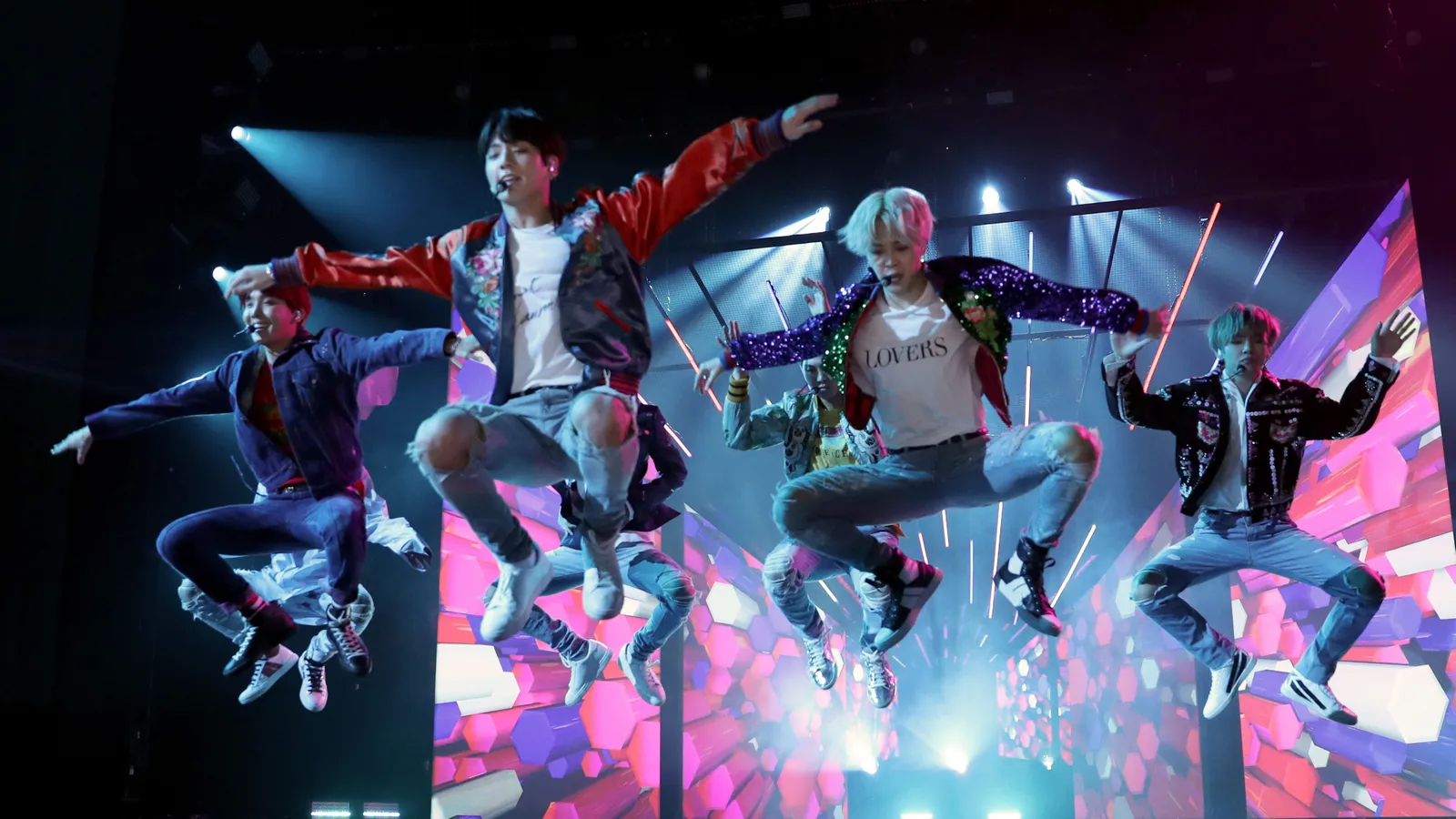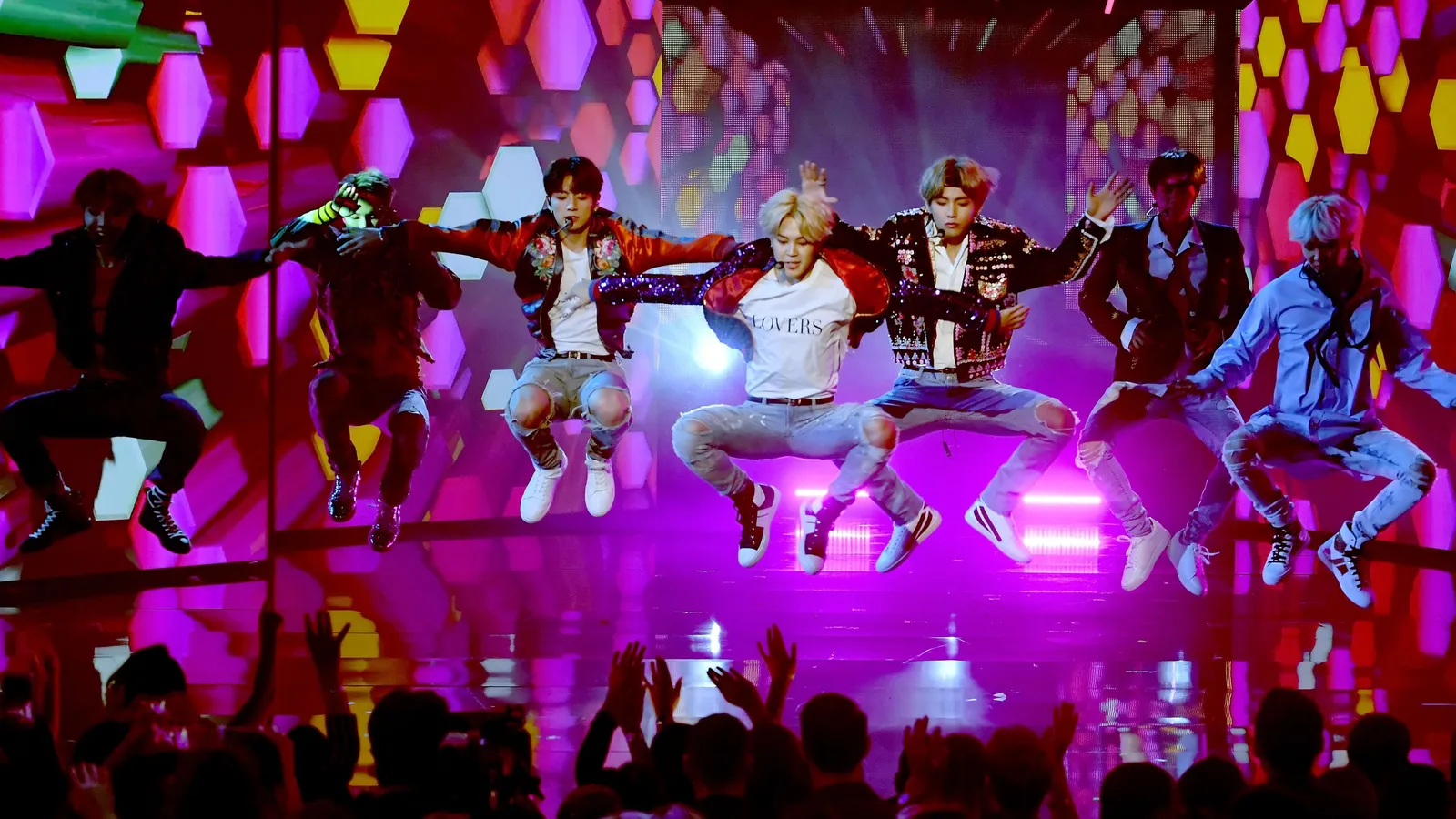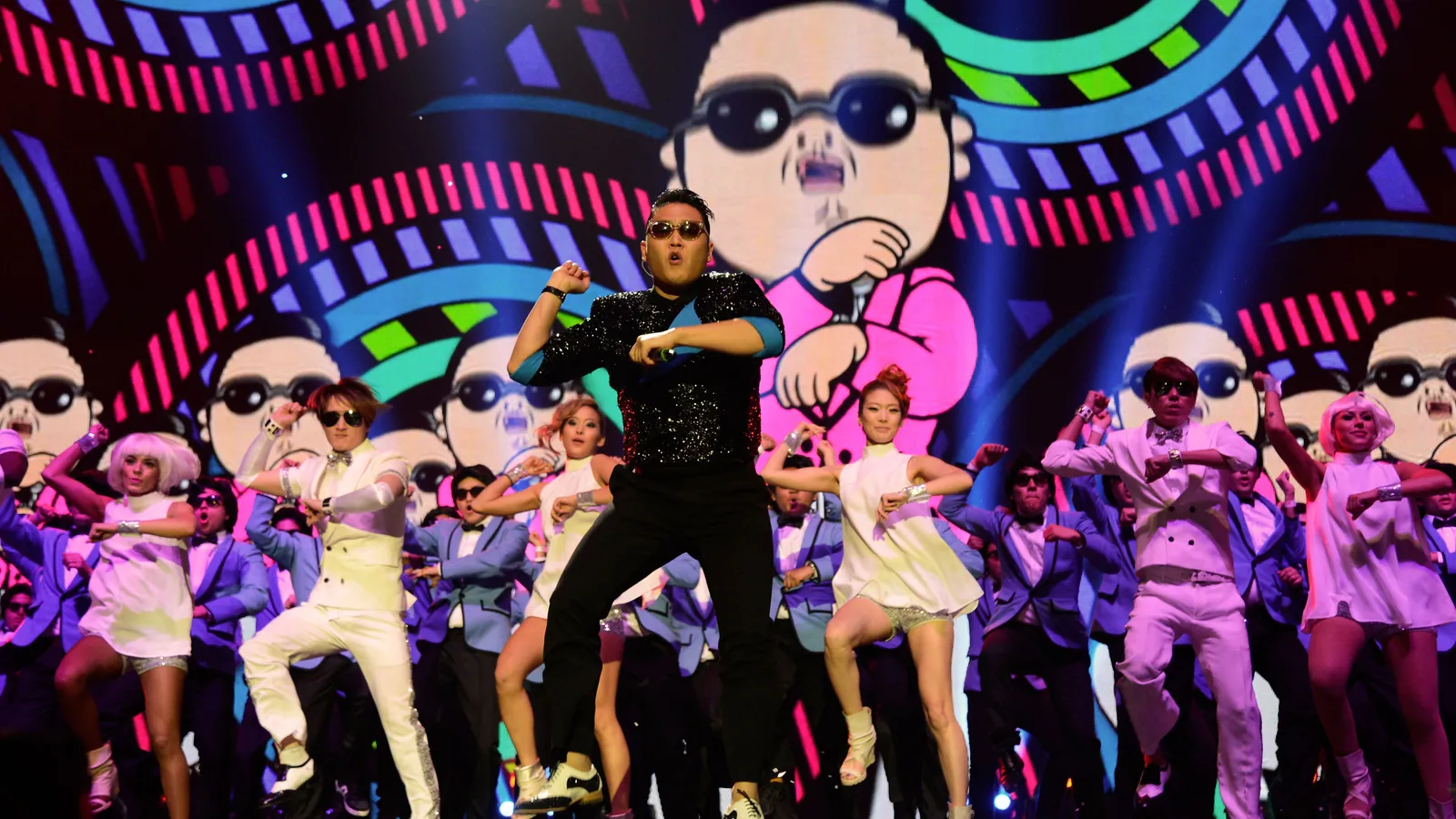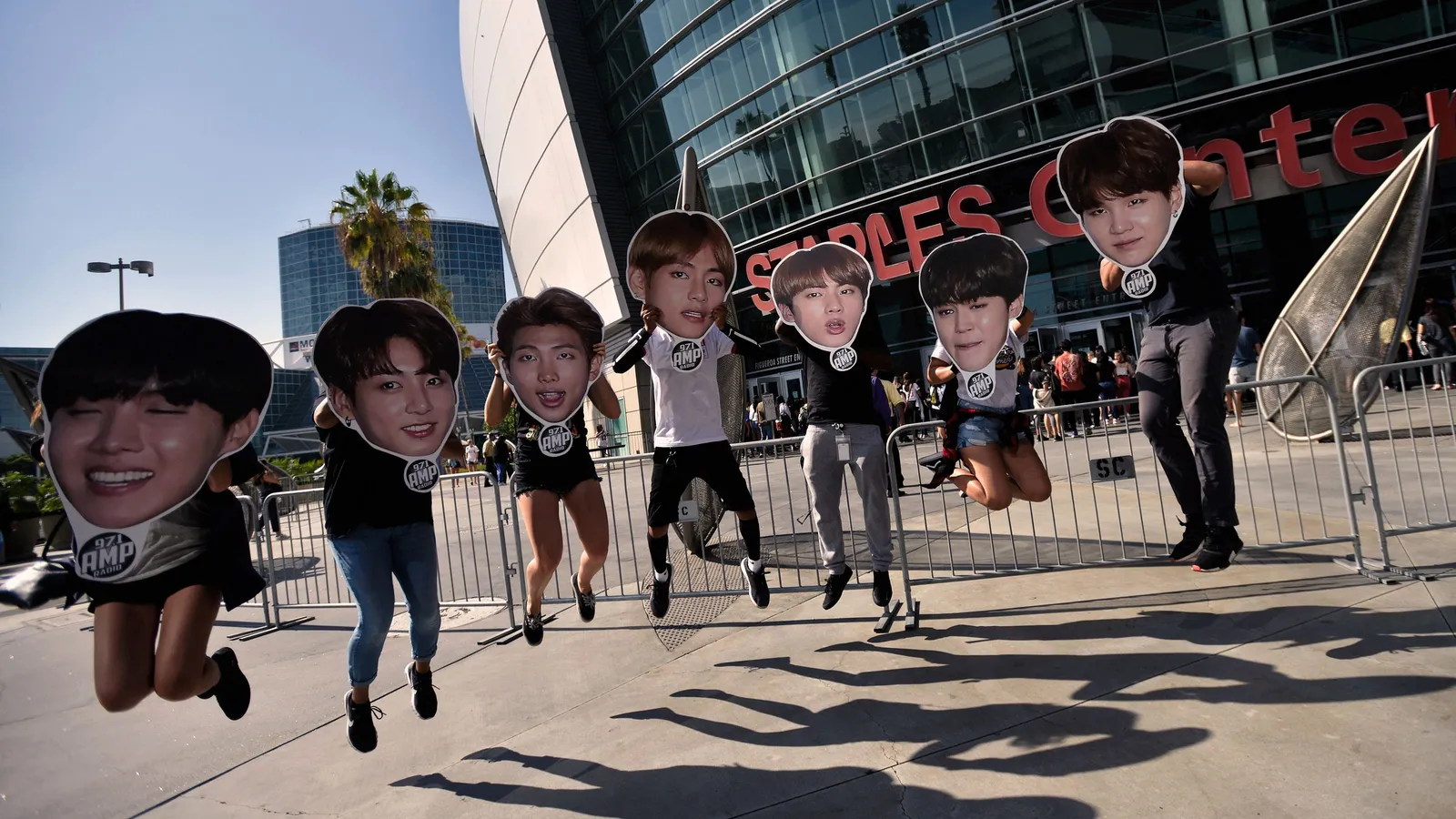In the late 1990s, major artists like Clone also made it in China and Taiwan. The prize at that time was the Japanese music market, and breakthrough happened in 2002 when Korea and Japan both hosted the soccer World Cup.


It is 1992, and three young men in a boy band are performing in a live television talent contest. The sound is new: Korean lyrics, Euro pop, African American hip-hop and rap. They dance in sync. The studio audience goes wild. The judges in their prim suits are less impressed. They reveal their scorecards. The band gets the lowest mark of the night, and is voted off the show
The judges couldn't have got it more wrong.
In the next few days the song I Know climbs to the top of the charts, and stays there for a record-smashing 17 weeks. That night the group, Seo Taeji and Boys, ignites a revolution. Korean pop or K-pop was born.
K-pop is now a multi-billion-dollar industry. Bands like BTS and Blackpink are selling out in the US, UK and international stadiums within minutes. BTS is second only to Drake in international music sales. How did K-pop conquer the world? It’s a story with several parts. BTS have become a global sensation (Credit: Getty Images)THE REVOLUTION WILL BE TELEVISED
BTS have become a global sensation (Credit: Getty Images)THE REVOLUTION WILL BE TELEVISED
From 2008, bigger forces meant that K-pop's reach extended well beyond an Asian fan base. Unlike in China and Japan, where they use home grown social media, Korean companies embraced international ones – Facebook, Twitter and YouTube – and K-pop began to become available on international music platforms. Oppa Gangnam style (Credit: Getty Images)“Fans overseas, if they saw it, heard it, liked it, wanted it, could immediately cross-over to another site, and either download that music, purchase that music or stream that music,” says Cho. “There was a perfect storm of international marketing and promotions connecting with international sales and streaming.”
Oppa Gangnam style (Credit: Getty Images)“Fans overseas, if they saw it, heard it, liked it, wanted it, could immediately cross-over to another site, and either download that music, purchase that music or stream that music,” says Cho. “There was a perfect storm of international marketing and promotions connecting with international sales and streaming.”
It showed that you could be big and not sing entirely in English or be in vogue. The power of the music video transcended language. Just one of the official videos of Gangnam Style on YouTube had well over three billion views, the largest number of hits of any video at that time.
RECRUITMENT REGIME
If K-pop is like a popular selling product, then how is it put together? Hannah Waite was at college in America looking for a subject to research. In the early hours of that morning, she stumbled across it.
“I came across a K-pop video that someone else posted and was blown away by the production value of it, the colours, the sounds. Everything was just so overwhelming,” says Waite. “I remember when I first started researching this whole phenomenon, people were like, ‘This is a flash in the pan. It's going to be like the Macarena’, you know where it's like a one hit and then it's done, and it just sort of goes away and remains regional.”
This was nothing like the Macarena. When Waite started looking, she couldn't find anything in English online. So, she started her own website called Moon-ROK, giving information on K-pop news and entertainment. The first day the site went live in 2014, it crashed.
“We weren't prepared for 15,000 people to come to the site overnight,” says Waite. “We didn't even have the server capacity to actually host that many people.”
Waite started delving deep into the origins of the bands. As in the West, the pop groups were manufactured. But in South Korea, it was taken to extremes. It was far more targeted. Children were spotted and recruited. “They start these kids out at a very young age,” she says. “You could be anywhere from age 10 to 14 and you could get recruited simply because a rep from the agency saw you at the mall and thought that you look gorgeous.” Blackpink became the first female K-pop group to play at Coachella (Credit: Getty Images)There is, says Waite, a specific formula and a set of conditions for creating a K-pop star. There are three main agencies with up to 200 trainees each. There are other smaller ones out there too. All K-pop bands come through this system. The recruits either stay at home or live in dorms. They live by a tight regime.
Blackpink became the first female K-pop group to play at Coachella (Credit: Getty Images)There is, says Waite, a specific formula and a set of conditions for creating a K-pop star. There are three main agencies with up to 200 trainees each. There are other smaller ones out there too. All K-pop bands come through this system. The recruits either stay at home or live in dorms. They live by a tight regime.
“You wake up, probably 5am. You train for a bit, whether that's choreography classes, vocal lessons. You sort of have a personalised schedule based on what your role in the group is,” says Waite. “Then they go to school until about 3pm, head back to the entertainment company where they do more lessons until about 11pm. In Seoul, the trains shut down at midnight, so they get on that last train, they go home, sleep for five hours and do it again.”
Bear in mind, these budding stars haven't even debuted yet. And when they do, they can have even earlier starts. Waits says sometimes the trainees are existing on up to two hours' sleep a night. Once you drop that first single and have your first performance, the clock is then ticking down again, she says, to when you become irrelevant. “Right behind you, there is a group of hungrier, more ambitious, younger kids that's looking to dethrone you as the next big thing,” says Waite. “So, you run yourself ragged to make sure that you're getting every penny out of it.”
Over the past few years, there's been an increase in K-pop stars admitting to having mental health issues. There was a high-profile suicide in 2017: Jonghyun, lead singer of one of the biggest groups SHINee, took his own life at the age of 27, and a note believed to have been sent by him to a friend spoke of his struggles with depression and fame. Another well-known star T.O.P. overdosed on anxiety medications. Tributes to Kim Jong-Hyun, the 27-year-old lead singer of SHINee (Credit: Getty Images)K-pop stars used to be bound by 13-year contracts. This term has been legally reduced to seven years. “That was actually the result of a couple of K-pop stars stepping out and saying these contracts are ridiculous: ‘I sleep two hours a night. I don't want to go to these shows. But if I don't show up, I get fined and I'm trapped until I'm essentially 30-years old, because these contracts are so long’,” says Waite. “They coined the term ‘slave contract’.”
Tributes to Kim Jong-Hyun, the 27-year-old lead singer of SHINee (Credit: Getty Images)K-pop stars used to be bound by 13-year contracts. This term has been legally reduced to seven years. “That was actually the result of a couple of K-pop stars stepping out and saying these contracts are ridiculous: ‘I sleep two hours a night. I don't want to go to these shows. But if I don't show up, I get fined and I'm trapped until I'm essentially 30-years old, because these contracts are so long’,” says Waite. “They coined the term ‘slave contract’.”
KOREAN WAVE
But, the more K-pop has become more successful, the more the establishment has become interested.
“South Korean business leaders and political leaders were figuring out that they needed to expand into other areas,” says Yung Lee, Professor of Sociology at University of California, Berkeley, who has written about K-pop. “The only thing young people especially were talking about was either South Korean drama or South Korean popular music.”
Right behind you, there is a group of hungrier, more ambitious, younger kids that's looking to dethrone you as the next big thing. So, you run yourself ragged to make sure that you're getting every penny out of it – Hannah Waite
“The impact, of course, it not in terms of money, but in terms of its popularity and expanding the South Korean influence or soft power abroad.”
There's even a word to describe this wave of Korean culture: Hallyu. And K-pop became central to lots of other profitable industries like the beauty business.
 BTS mania hits the US (Credit: Getty Images)“For example, cosmetics and plastic surgery and other elements of the beauty industry really rely on K-pop, especially to promote this image that if you use these South Korean products and service that you will become attractive, cool, great looking just like these K-pop stars,” says Lee. “The vast majority, I think, of young South Koreans get some form of intervention either in your face or your body. So, it’s something that's really changing South Korea, and not always for better, I'm afraid.”
BTS mania hits the US (Credit: Getty Images)“For example, cosmetics and plastic surgery and other elements of the beauty industry really rely on K-pop, especially to promote this image that if you use these South Korean products and service that you will become attractive, cool, great looking just like these K-pop stars,” says Lee. “The vast majority, I think, of young South Koreans get some form of intervention either in your face or your body. So, it’s something that's really changing South Korea, and not always for better, I'm afraid.”
It's resulted, he believes, in a cultural amnesia to traditional Korean society. “It's really accelerated in the last couple of decades, and K-pop is part of the process of the massive change in South Korean society,” says Lee.
With that change and the emergence of some serious scandals, the worry is that it could tarnish brand Korea. And that could post a dilemma for the government.
“What can they do? They began to ride this horse, and so they're almost stuck with it now, and they invested so much prestige about South Korean in K-pop,” says Lee. “So, they had no choice at this point but to keep on investing, to keep on trying to flog this horse that they've ridden on.”
So, how did K-pop conquer the world? Clever design and brilliant marketing. But there's more to a K-pop band. It's an expression of Korean culture, and the government has been more than happy to capitalise on its success.
However, the constituent parts to the K-pop product are people, some as young as 10. They may have to endure so-called ‘slave contracts’ and arduous daily regimes. At its darkest, K-pop culture stands accused of scandals. Not a side of South Korea the government wants to advertise. All this may not be affecting music sales. But it's a heavy price of conquering the world.
This originally appeared on BBC World Service’s The Inquiry. For more episodes of The Inquiry, please visit the progamme’s site.
https://www.bbc.com/culture
Adapted from The Inquiry on BBC World Service
Featured Commentator : Bernie Cho [DFSB Kollective]